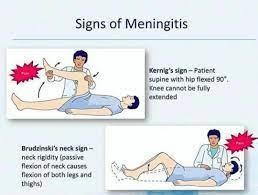Mr Ozz, a 45-year-old insulin-dependent diabetic, is admitted to the hospital with a diagnosis of pneumonia. He has been febrile since admission. His daily insulin requirement is 24 units of NPH. Every morning Albert is given NPH insulin at 0730. Meals are served at 0830, 1230, and 1830.
The nurse expects that the NPH insulin will reach its maximum effect (peak) between the hours of:
1530 and 2130
1730 and 2330
1130 and 1330
1330 and 1930
The Correct Answer is B
Choice A rationale: This does not match the peak time of NPH insulin.
Choice B rationale: This does not match the peak time of NPH insulin.
Choice C rationale: This does not match the peak time of NPH insulin.
Choice D rationale: This is because NPH insulin is an intermediate-acting insulin that has an onset of action of 1 to 2 hours, a peak of 6 to 12 hours, and a duration of 18 to 24 hours. Therefore, if Albert is given NPH insulin at 0730, the peak effect will occur between 1330 and 1930, which means that his blood glucose level will be lowest during this time.
Nursing Test Bank
Naxlex Comprehensive Predictor Exams
Related Questions
Correct Answer is B
Explanation
Choice A rationale: This is not accurate since the manifestations of facial nerve paralysis are observed on the contralateral side which in this case is the left side of the face hence the right facial nerve is paralyzed.
Choice B rationale: Facial nerve paralysis cause symptoms such as drooping of the eyelid, cheek or mouth as depicted in the above picture. The right facial nerve is paralyzed since the nerve innervates the contralateral side hence the effects are demonstrated on the
left side of the face.
Choice C rationale: trigeminal nerve paralysis causes symptoms such as weakness in muscles of mastication, altered sensation over the face and tongue, and hearing impairment and not the symptoms depicted above.
Choice D rationale: trigeminal nerve paralysis causes symptoms such as weakness in muscles of mastication, altered sensation over the face and tongue, and hearing impairment and not the symptoms depicted above.
Correct Answer is B
Explanation
Choice A rationale: This is a positive Trousseau's sign, which indicates hypocalcemia or tetany. It is not related to meningitis or meningeal irritation.
Choice B rationale: Kernig's sign is indicated when there is resistance and pain with knee extension and hip flexion, suggesting meningeal irritation.
Choice C rationale: This is a positive Homan's sign, which indicates deep vein thrombosis or phlebitis. It is not related to meningitis or meningeal irritation.
Choice D rationale: This is a sign of nuchal rigidity, which indicates meningeal irritation, but it is not specific to Kernig's sign. Nuchal rigidity can also be caused by other conditions such as cervical arthritis or muscle spasm.

Whether you are a student looking to ace your exams or a practicing nurse seeking to enhance your expertise , our nursing education contents will empower you with the confidence and competence to make a difference in the lives of patients and become a respected leader in the healthcare field.
Visit Naxlex, invest in your future and unlock endless possibilities with our unparalleled nursing education contents today
Report Wrong Answer on the Current Question
Do you disagree with the answer? If yes, what is your expected answer? Explain.
Kindly be descriptive with the issue you are facing.
